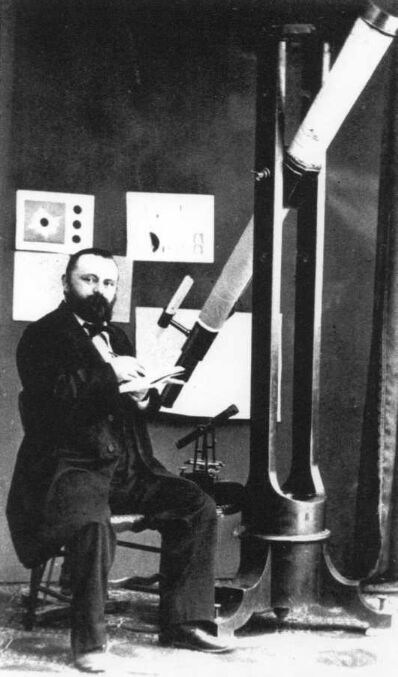MARCH 29, 1807: The German astronomer Heinrich Olbers discovers the asteroid now known as (4) Vesta, the brightest and second-largest asteroid in the main asteroid belt. Vesta was orbited by the Dawn spacecraft between July 2011 and September 2012. It and the other first-known main-belt asteroids are discussed in the Week 1 “Special Topics” presentation.
MARCH 30, 240 B.C.: Astronomers in China make the first sighting of what is now known as Comet 1P/Halley. This comet’s history is discussed in a previous “Special Topics” presentation.

MARCH 30, 2021: The James Webb Space Telescope is scheduled for launch from Kourou, French Guiana. Webb, which will be placed near the Earth-Sun L2 Lagrangian point 1.5 million km directly anti-sunward of Earth, is touted as being the successor to the Hubble Space Telescope, although its detector sensitivity is primarily in the infrared.
MARCH 31, 2005: Michael Brown and his team discover the large Kuiper Belt object now known as the “dwarf planet” (136472) Makemake. The “dwarf planets” and other Kuiper Belt objects are discussed in a future “Special Topics” presentation.
APRIL 1, 1997: Comet Hale-Bopp C/1995 O1 passes through perihelion at a heliocentric distance of 0.914 AU. At this writing, this is the northern hemisphere’s most recent “Great Comet” and, for obvious reasons, had a major impact on my life. It is a future “Comet of the Week.”
APRIL 1, 2019: American scientist Robert DePalma publishes a paper describing a site in North Dakota that contains numerous fossils, possibly indicating a rapid mass death following a tsunami-like upsurge of water from the Cretaceous-Tertiary (K-T) impact event. The conclusions are controversial and are not universally accepted at this time, but do provide areas of future research. The K-T event is the subject of a future “Special Topics” presentation.
APRIL 3, 1867: The German astronomer Wilhelm Tempel, observing from Marseilles, France, discovers the comet now known as 9P/Tempel 1. After being observed at the next two returns, the comet was lost for almost a hundred years before being recovered in the mid-20th Century. It was the destination of the Deep Impact mission in 2005 and was also visited by the Stardust spacecraft in 2011, becoming the only comet that has been visited by spacecraft on two different returns. It is a future “Comet of the Week.”
APRIL 3, 2020: The main-belt asteroid (3) Juno will be at opposition. It is traveling through the constellation Virgo and is about magnitude 9.5.
More from Week 14:
Comet of the Week Special Topic Free PDF Download Glossary
Ice and Stone 2020 Home Page


